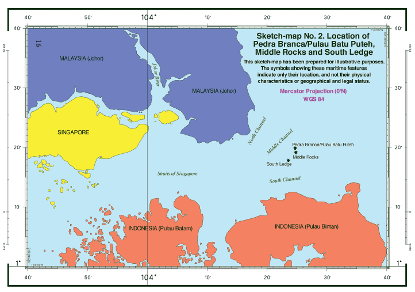Introduction
The recent announcement by the Israeli security cabinet to seize Gaza is not surprising. It should rather be seen as a formal acknowledgement of the de facto state of affairs in Gaza. But formal announcements seldom come without justifications. Since modern international law prohibits the use of force in international relations and therefore renders acquisitions obtained by force invalid, one of the foremost justifications advanced in support of such acquisition is the right to self-defence. The present article looks into this justification to find its reasonability in the face of established international principles outlawing the use of force in international relations. Herein, it is imperative to make a distinction between acquisition, occupation and seizure before we go further.
Acquisition refers to the lawful process by which a state obtains sovereignty over territory, such as through cession, prescription, or decolonization, and must occur with the consent of the original sovereign or in accordance with international norms. Seizure, on the other hand, implies the forcible taking of territory during armed conflict, usually of a temporary nature, and does not in itself create lawful title to the land. Annexation goes further, involving the unilateral incorporation of seized territory into the annexing state’s sovereign domain, often accompanied by administrative or legal measures to assert permanent control. While acquisition may be lawful if achieved through recognized modes, both seizure and annexation by force are prohibited under the UN Charter and customary international law, reflecting the principle that no state may alter borders unilaterally through coercion.
Territorial Integrity: A Cornerstone of International Law
The modern international law puts so much emphasis on the territorial integrity of states that no discussion is complete without its place. Territory or state boundaries form the sine qua non in all legal discourse on the settlement of international disputes. It is one of the basic or key legal concepts in international law (P.K. Menon, 1994). The international norm of sovereignty or sovereign rights, which forms the bulwark of modern international law, is unimaginable without the concept of territory. In fact, the notion of a fixed territory is fundamental to the study of state relations, wherein a state is supreme within its territorial sphere and, at the same time, prohibited from forcefully challenging the supremacy of other states in their respective spheres. Intervention or intrusion into another’s territory is therefore inimical to settled principles of international law. It is antithetical to the international rules of self-determination and self-rule. No wonder, therefore, non-use of force is one of the cardinal principles of international law and a rule of customary international law.
The concept of territory is superfluous if the physical landmass is not accompanied by water and air associated with it. Thus, rivers, lakes, territorial waters and space above the landmass form part and parcel of the physical landmass and form an integral part of any territory. Intrusion or control of any of these elements will have the same effect as that of seizing or acquiring one’s territory and therefore encroaching on sovereignty. Traditionally, territories can be acquired through five means: occupation, prescription, cession, annexation and accretion. Having their roots in the Roman law rules on the acquisition of private property, most of them were held as outdated with the development of modern rules of non-use of force and pacific settlement of international disputes. As such, the modern international law considers only cession and accretion as valid means of territorial acquisition. In other words, any territorial acquisition besides cession and accretion is deemed illegal under international law.
The formal codification banning territorial acquisition through the use of force in the form of Article 2(4) of the United Nations Charter is supplemented by numerous United Nations General Assembly Resolutions. For instance, UN General Assembly Resolution 2625 (1970) on Friendly Relations and Resolution 3314 (1974) on the Definition of Aggression reaffirms prohibition against territorial acquisition through the use of force. Thus, modern international law leaves no room for territorial expansion or acquisition through forceful means.
Acquisitions in Self-defence
However, some scholars justify territorial acquisition by conquest or annexation on the grounds of self-defence. Essentially, there are two justifications given in support of territorial acquisition via self-defence. According to one view, since self-defence is a recognised ground for the use of force in international law, seizure of any territory via self-defence and its continuous acquisition is not, therefore, in violation of the principles of international law (Curtis, 1991). In other words, since the land has been acquired in good faith, although via the use of force, there is no illegality in its seizure by the defending state. The second view holds that seizure and control of a territory is valid so long as it is necessary for self-defence. The basic premise of this view is that in certain situations, the aggressor may use the territory to mount an attack. In such situations, the seizure and control of that territory is justified. Thus, where seizure of a territory is a pre-requisite for the exercise of the right to self-defence, such acquisition and control is valid under international law.
Scholars like Michael Curtis firmly subscribe to this idea. According to Curtis, the present occupation of the West Bank and the Gaza Strip is necessary for Israel to exercise its right of self-defence. In his view, such an occupation is, in reality, the result of continuous threats and wars against Israel by Arab states. In fact, the Arab aggression is the cause of Israel’s occupation. Further, since the occupation has been done in good faith, i.e., for purposes of exercising the right of self-defence, and since the state of Israel continues to face threats from Arab countries, the continuous occupation cannot be deemed illegal under international law. Herein, according to Curtis, the occupation of the West Bank or Gaza Strip by Israel has to be distinguished from acquisition through aggressive conquests. Rather, these acquisitions are part of defensive actions for the protection of the state of Israel from annihilation. Thus, there is no illegality in the continuous occupation of the territory by Israel acquired in 1967 until the signing of a durable peace agreement, since they are necessary as part of self-defence tactics.
Territorial Acquisition in Modern International Law
The argument may seem convincing, especially when read in the absence of contemporary rules on the transfer of territories. Traditionally, the transfer of territory via occupation has been understood in terms of private ownership and physical possession of the land. However, the modern international law ascribes utmost importance to the transfer of sovereignty in place of the transfer of physical possession of land/property. It connotes establishing governance over the territory in good faith with consequential international rights and duties. Thus, the transfer of sovereignty must be accompanied by an actual exercise of authority in the occupied territories. Such a shift is mainly on account of the changed character of the state from a monarch possessing lands in private ownership to a constitutional democracy holding lands in trust.
Suffice it to say that the modern international law does not recognise the transfer or seizure of territories through the use of force. It does not matter whether the acquisition is the result of defensive or aggressive actions. The justification of the occupation of foreign territories on defensive grounds runs a huge risk of allowing acquisition through the use of force in the guise of a defensive act. What is aggression for one country can very well be a defensive act for another. Furthermore, Curtis completely ignores the humanitarian rule of military necessity and urgency, wherein use of force in self-defence is justified in the event of an imminent threat and where the recourse to the United Nations is not possible. Additionally, the right of self-defence is available to a state with built-in limitations like necessity and proportionality. Thus, even if the acquisition of a territory can be justified, in certain situations, on grounds of self-defence, the continuous occupation for nearly 50 years is nothing but a disproportionate exercise of the right of self-defence. The perception of an ever-existing threat cannot be the basis of controlling a territory indefinitely. In essence. proponents of acquisition through self-defence disguise aggression as defensive strategy to justify territorial expansion.
The United Nations General Assembly and Security Council, have on numerous occasions declared annexation and continuous occupation of territories in name of self-defence illegal. In particular, the UN Security Council Resolutions 242 (1967) and 497 (1981), rejected Israeli claims of lawful occupation of West Bank, Gaza Strip, Sinai Peninsula, and Golan Heights on grounds of self-defence, thereby affirming the principle of the “inadmissibility of the acquisition of territory by war.” More recently, in 2024, the ICJ in its Advisory Opinion on the Legal Consequences arising from the Policies and Practices of Israel in the Occupied Palestinian Territory, including East Jerusalem emphatically declared occupation or annexation on grounds of self-defence completely inadmissible under international law. Similar arguments made by Russia in justification of annexation of Crimea does not hold any ground in the eyes of international law. Therefore, all actions pertinent to occupied territories are invalid and void ab initio.
The jurisprudence of the International Court of Justice (ICJ) further reinforces the prohibition. In Nicaragua v. United States (1986), the Court underscored that the right of self-defence is confined by the principles of necessity and proportionality, thereby preventing actions that exceed repelling an armed attack. Similarly, in its 2004 Advisory Opinion on theLegal Consequences of the Construction of a Wall in the Occupied Palestinian Territory, the ICJ rejected Israel’s reliance on self-defence to justify measures taken in occupied areas, holding that self-defence cannot legitimize territorial conquest or violations of humanitarian law. The Court’s reasoning in the Armed Activities on the Territory of the Congo (2005) further affirmed that self-defence cannot extend to acquiring or asserting sovereignty over another state’s territory. Together, these precedents make clear that while the use of force in self-defence may result in temporary occupation, it can never provide lawful grounds for annexation or seizure of a foreign territory.
Conclusion
International law today stands firmly against the acquisition of territory through force, regardless of whether the force is employed in aggression or in self-defence. The right of self-defence, as recognized under Article 51 of the UN Charter, is designed as a temporary and proportionate response to repel an armed attack, not as a justification for permanent territorial gains. While states may argue that annexation or prolonged occupation is necessary for security, the consistent stance of the United Nations, the International Court of Justice, and the broader international community is that sovereignty cannot change hands through war. This principle is not only legal but also normative: allowing territorial acquisition under the pretext of self-defence would erode the cornerstone of the post-1945 order—the inviolability of borders—and revive the dangerous logic of conquest.
The contemporary disputes in regions such as Palestine and Ukraine demonstrate both the persistence of challenges to this principle and the resilience of the international community’s commitment to uphold it. Non-recognition policies, sanctions, and repeated affirmations through Security Council and General Assembly resolutions reflect a near-universal consensus that territorial acquisition through self-defence claims is unlawful. Thus, the law seeks to strike a delicate balance: it permits states to defend themselves against aggression, but it closes the door to using defence as a cloak for expansionism. In essence, self-defence is a shield, not a license for conquest.
Looking ahead, the international community must strengthen mechanisms for accountability to ensure this principle is not undermined by political realities. This includes bolstering the role of the ICJ and other international tribunals in adjudicating disputes over territorial acquisition, reinforcing the doctrine of non-recognition through consistent state practice, and enhancing the capacity of multilateral institutions like the UN to respond effectively to violations. Furthermore, academic and policy debates should continue to explore innovative enforcement strategies—such as collective sanctions, peacekeeping mandates with clearer territorial safeguards, and regional security frameworks—to deter violations. Ultimately, safeguarding the prohibition on territorial acquisition is not just a matter of legal fidelity, but of preserving international peace and stability. By reaffirming that no justification, even self-defence, can legitimize conquest, international law protects the sovereignty of states and upholds the vision of a rules-based order where disputes are settled by law, not force.
Author
Mr Mohd Sikandar is an Assistant Professor of Law at National Law University Odisha and can be reached at sikandar@nluo.ac.in for any inputs or suggestions.





